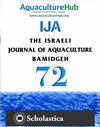Analysis of intestinal flora and environmental microbial diversity of Takifugu rubripes
IF 0.5
4区 农林科学
Q4 FISHERIES
引用次数: 0
Abstract
Takifugu rubripes (T. rubripes) is marine fish rich in protein and essential amino acids. With the continuous development of T. rubripes farming, intensive aquaculture has increased the infection rate with fish diseases. To explore the relationship between environmental microbial communities and gut microbiota, we sequenced the 16s rRNA gene V3–V4 region of the microorganisms in the aquaculture water and gut flora of T. rubripes. The results indicated 934 operational taxonomic units for T. rubripes gut contents and aquaculture samples. A total of 31 phyla and 498 genera were identified. At the phylum level, except for the phylum Proteobacteria, the dominant phyla in intestinal contents were Firmicutes, Acidobacteria, and Fusobacteria. However, the dominant phyla in water were Actinobacteria, Cyanobacteria, and Patescibacteria. At the genus level, intestinal contents included Photobacterium, Arcobacter, Vibrio, and Ruminococcaceae. The water samples mainly included Clade_Ia, Rhodobacteraceae, Eutreptiella pomquetensis, Lentibacter, Clade_III, and PeM15. Principal component analysis showed that the microbial compositions of samples from the same source were similar. There were significant differences between the intestinal flora and water microorganisms. Therefore, the research results showed the differences between the microbial communities in the intestinal tract and aquaculture water of T. rubripes and the characteristics of the main pathogenic bacteria; this could help guide the environmental regulation and disease prevention of T. rubripes aquaculture.红鳍东方鲀肠道菌群及环境微生物多样性分析
红鳍东方鲀(T. rubripes)是富含蛋白质和必需氨基酸的海洋鱼类。随着红鲌养殖业的不断发展,集约化养殖增加了红鲌的鱼病感染率。为了探索环境微生物群落与肠道菌群的关系,我们对养殖水体中微生物的16s rRNA基因V3-V4区和红带赤鳅肠道菌群进行了测序。结果表明,红带弓形虫肠道内容物和水产养殖样品共有934个操作分类单位。共鉴定出31门498属。在门水平上,除变形菌门外,肠道内容物的优势门为厚壁菌门、酸杆菌门和梭杆菌门。水体中的优势菌门为放线菌门、蓝藻门和Patescibacteria门。在属水平上,肠道内容物包括光杆菌、弧菌、瘤胃球菌科。水样主要包括Clade_Ia、Rhodobacteraceae、Eutreptiella pomquetensis、Lentibacter、Clade_III和PeM15。主成分分析表明,同一来源样品的微生物组成相似。肠道菌群与水中微生物之间存在显著差异。因此,研究结果表明红带绦虫肠道和养殖水体微生物群落的差异及主要致病菌的特点;这将有助于指导红带绦虫养殖的环境调控和病害防治。
本文章由计算机程序翻译,如有差异,请以英文原文为准。
求助全文
约1分钟内获得全文
求助全文
来源期刊
CiteScore
0.90
自引率
16.70%
发文量
49
审稿时长
3 months
期刊介绍:
Information not localized

 求助内容:
求助内容: 应助结果提醒方式:
应助结果提醒方式:


